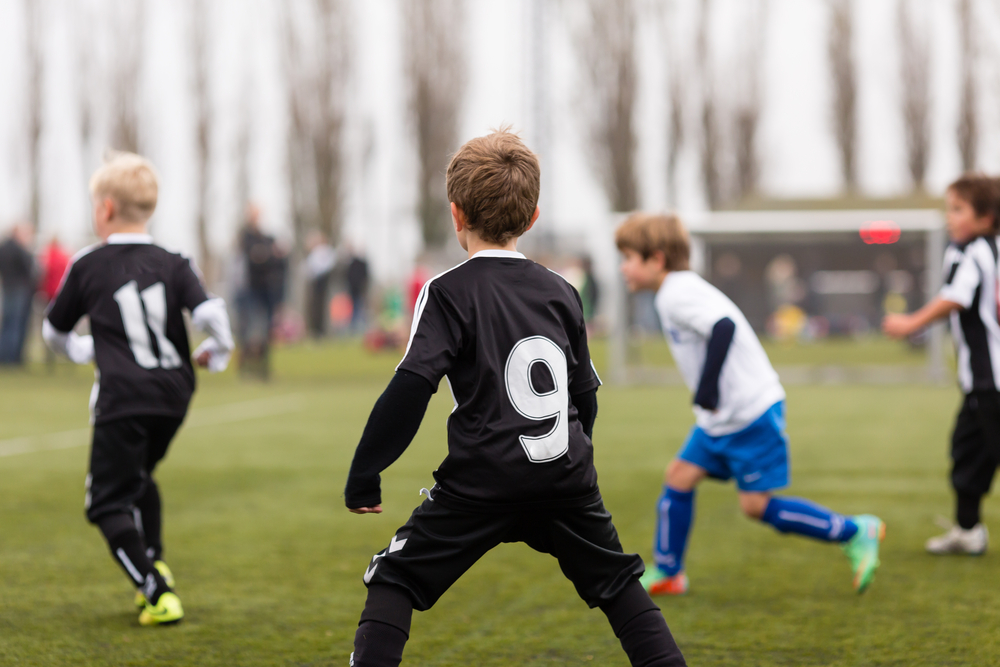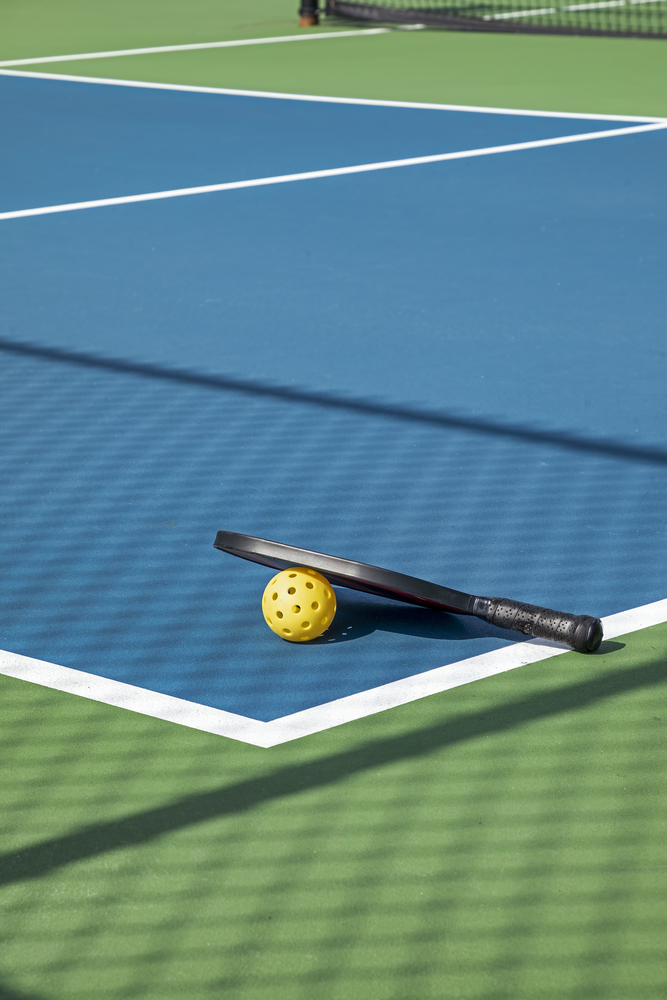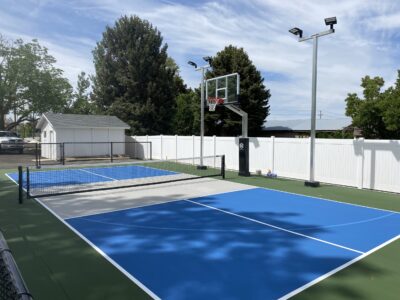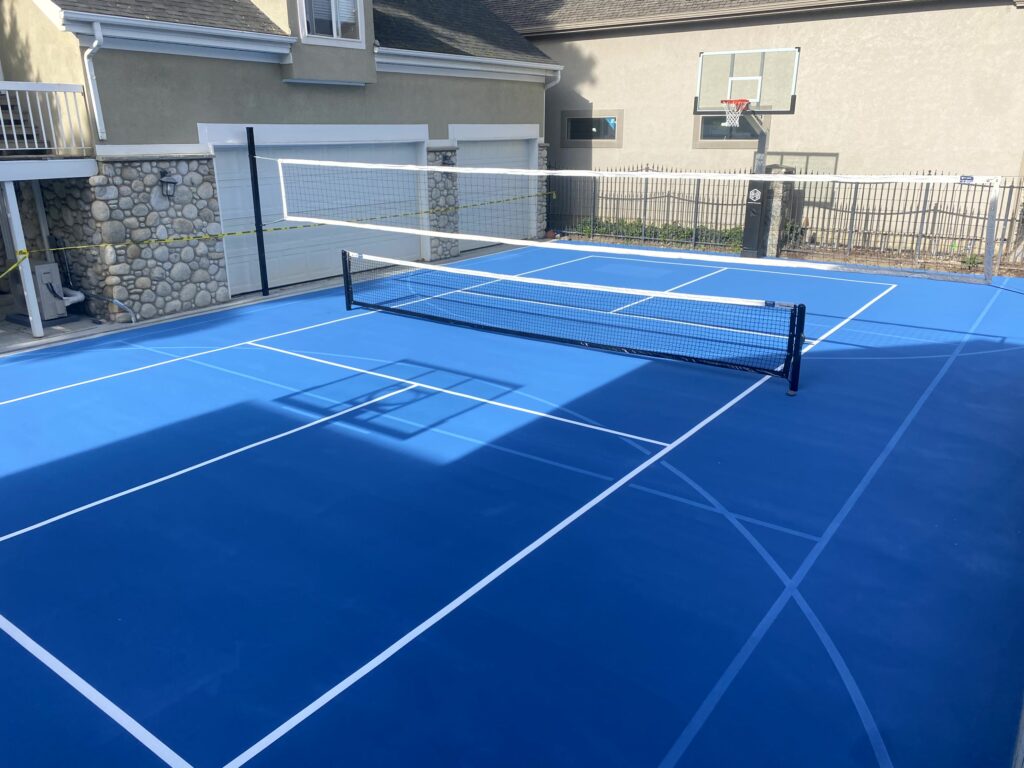Both courts and pools are popular additions to people’s backyards, you may find yourself torn between the two. While a choice few are lucky enough to not have to decide whether to install a court or a pool because they can afford to do both, that’s not the case for the vast majority of people. Since both courts and pools are expensive to install, you don’t want to choose one over the other only to regret it later.
If you’re stuck trying to decide whether to install a court or a pool, keep reading. We’ll go over some of the key factors to consider when making this decision.
What Sports Do You Like Best?
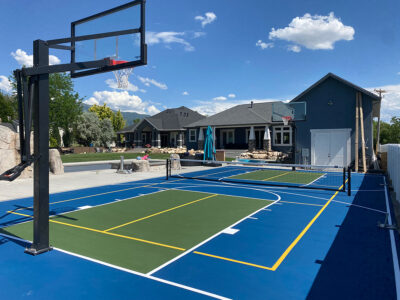
When deciding whether to install a court or a pool, be honest with yourself about the types of sports you and your family enjoy most.
If you’re an avid swimmer but you don’t really gravitate towards pickleball, tennis, basketball, or other such sports much, a pool could be more than worth it to you. Regardless of whether you simply enjoy spending time in the water, you have a professional mermaid tail, you’re super into water-polo, or you like doing laps and practicing your strokes, having your own pool gives you the freedom of being able to jump into the water whenever you please.
However, if you like swimming, but you like being able to play multiple sports on one court, a court could be a better choice for you. Even if you install a basketball court or a tennis court, you can play other sports on it. You can even draw lines for other sports on the court for when you want to play pickleball or badminton instead. If you know you like to bounce around between sports, you can have a multi-purpose court installed so you can alternate sports with ease.
Whether you install a court or a pool, they’re both major investments. Have a good, long think with yourself. If you like swimming, but your parents didn’t joke that you’re part fish growing up, it may be better to choose a court and just go to the gym or community pool when you want to swim. If you like sports like tennis and pickleball, but you feel most at home in the water, it may be better to choose a pool and just go to your community courts when you want to get a match in.

What’s The Weather Like Where You Live?
This is another reality when you’re trying to decide whether to install a court or a pool. If you live somewhere like sunny California, you don’t have to worry about this, because you can use both a court and a pool all year round. However, if you live somewhere that gets all four seasons, like Utah, you’ll have to come to terms with the fact that you’ll only be able to use a pool for a couple of months out of the year.
You can use a court far more often than a pool if you live somewhere with four seasons. You don’t have to wait for the weather to be warm enough or about something like pool heaters, because playing on courts warms you up.
How Much Are You Willing To Spend On Maintenance?
Courts need to be resurfaced every 4-8 years, depending on wear and tear, how well they’re maintained, and environmental factors. This is a simple reality of having a court. Regardless of the quality of the court, each court will need to be resurfaced sooner or later in order to maintain its aesthetic appeal and to be safe for people to play on.
Fortunately, courts are pretty easy to maintain. You need to sweep away any dirt and debris and give them a good pressure wash every now and then. If they suffer any damage, like cracks, you will need to have them repaired sooner rather than later in order to prevent the damage from worsening.

Pools, on the other hand, are notoriously high maintenance. You need to think about the type of water you have, whether it’s salt water or chlorine. You need to ensure that it has safe chemical levels. You need to clean out any bugs, dirt, and debris. You’ll also need to think about moisture protection for the surrounding areas.
You’ll need to think about things like a pool cover, draining the pool and refilling it, electricity costs, and more. Another reality people don’t like to think about is if a child has an accident in the pool, you’re the one who has to worry about addressing it, rather than leaving it to the employees at a public pool.
So, if you love swimming and court sports equally, but you’re not a fan of maintenance, the choice between whether to install a court or a pool is clear.
Don’t Forget About Danger
While pools may seem high status and oh-so-hip, the unfortunate reality is that you need to worry about the potential for injuries and drowning. People can slip and fall, take a dive into a pool that isn’t deep enough for diving, and be mindful of the risk of drowning. Children will need to be constantly watched.
Courts have their share of risks, too. If the surface is cracked or has depressions in it, people can trip and fall. Balls can accidentally hit people and hurt them. However, courts are not anywhere near as inherently dangerous as pools can be.

So, if safety is your top priority and you want the kids to be able to go outside and play without having to worry about keeping an eagle eye on them, you’ll want to opt for a court rather than a pool.
Do You Want A New Surface For Your Court?
While we here at Pickle Court Surfacing don’t install courts or pools, we do provide court surfacing and resurfacing services. We also provide courts accessories, like ball containment systems, nets, hoops, and more. Contact us today to learn more about our court surfacing services in and around Midway, UT.


